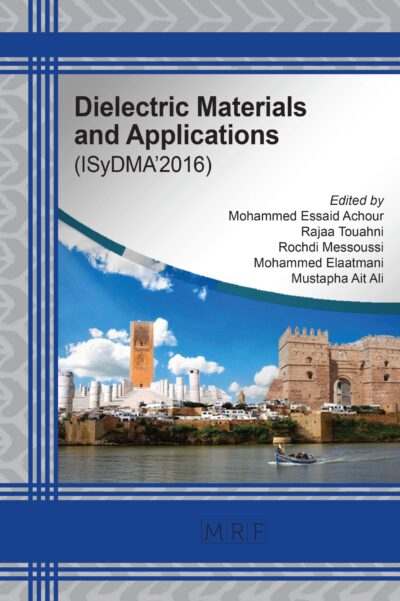Experimental and Numerical Study of the Mechanical Behavior of a Commercial Polypropylene Woven Fabric
E. Agaliotis, C. Bernal, P.J. Herrera-Franco, E.A. Flores-Johnson
Abstract. Heterogeneous conventional composites have limited recyclability and their end-of-life processes require high energy thus, they represent a recycling challenge. A promising approach to composites recycling is to employ thermoplastic self-reinforced composites (SRCs) for structural building applications. SRCs have specific economic and ecological advantages and can be recycled. Similar to traditional composites, the stress transfer in self-reinforced composites occurs via an interface/interphase, but in this case, molecular entanglements, favorable amorphous/crystalline superstructures, and H-bonding may serve for improved adhesion and hence for stress transfer between matrix and reinforcement via the interphase. In addition, their low density and preferred recycling make them an appealing alternative over traditional composites in many structural applications. As in conventional composites, one of the major determining factors of SRCs final performance is reinforcement behavior. Hence, the evaluation of reinforcement mechanical properties seems to be essential. In this work, the tensile properties of a low‐cost commercial polypropylene (PP) woven fabric composed of highly stretched PP tapes, were investigated. A 3D finite-element model for uniaxial tensile tests of the PP woven fabric was built in Abaqus/Explicit by modeling individual tapes and taking into account friction among them. An orthotropic elastic model was used. In order to obtain an optimal model design for the woven fabric, all the geometrical parameters were experimentally obtained and the tensile properties of individual tapes in both warp and weft directions were also determined. It was observed that the fabric mechanical behavior is mainly affected by the internal geometry of the woven fabric. The simulation results were in good agreement with the fabric mode of failure observed in the experiments.
Keywords
Polypropylene, Woven Fabric, Finite-Element Modeling, Recycling
Published online , 5 pages
Copyright © 2018 by the author(s)
Published under license by Materials Research Forum LLC., Millersville PA, USA
Citation: E. Agaliotis, C. Bernal, P.J. Herrera-Franco, E.A. Flores-Johnson, ‘Experimental and Numerical Study of the Mechanical Behavior of a Commercial Polypropylene Woven Fabric’, Materials Research Proceedings, Vol. 7, pp 799-803, 2018
DOI: https://dx.doi.org/10.21741/9781945291838-79
The article was published as article 79 of the book Non-Conventional Materials and Technologies
References
[1] Matabola KP, De Vries AR, Moolman FS, Luyt AS. Single polymer composites: A review. J Mater Sci 2009;44:6213-6222. https://doi.org/10.1007/s10853-009-3792-1
[2] Karger-Kocsis J, Bárány T. Single-polymer composites (SPCs): Status and future trends. Compos Sci Technol 2014;92:77-94. https://doi.org/10.1016/j.compscitech.2013.12.006
[3] Kmetty Á, Bárány T, Karger-Kocsis, J. Self-reinforced polymeric materials: a review. Prog Polym Sci 2010;35(10):1288-1310. https://doi.org/10.1016/j.progpolymsci.2010.07.002
[4] Chawla KK. Composite Materials: Science and Engineering. New York: Springer, 2012. https://doi.org/10.1007/978-0-387-74365-3
[5] Rouf K, Denton NL, French RM. Effect of fabric weaves on the dynamic response of two-dimensional woven fabric composites. J Mater Sci 2017;52: 10581-10591. https://doi.org/10.1007/s10853-017-1183-6
[6] Houshyar S, Shanks RA, Hodzic A. Influence of different woven geometry in poly(propylene) woven composites. Macromol Mater Eng 2005;290:45-52. https://doi.org/10.1002/mame.200400158
[7] Rajesh M, Pitchaimani J. Dynamic mechanical analysis and free vibration behavior of intra-ply woven natural fiber hybrid polymer composite. J Reinf Plast Compos 2016;35(3):228-242. https://doi.org/10.1177/0731684415611973
[8] Lucchetta MC, Morales Arias JP, Mollo M, Bernal CR. Self‐reinforced composites based on commercial PP woven fabrics and a random PP copolymer modified with quartz. Polym Adv Technol 2016;27(8):1072-1081. https://doi.org/10.1002/pat.3772
[9] Loix F, Badel P, Orgéas L, Geindreau C, Boisse P. Woven fabric permeability: From textile deformation to fluid flow mesoscale simulations. Compos Sci Technol 2008;68(7):1624-1630. https://doi.org/10.1016/j.compscitech.2008.02.027
[10] Abaqus Analysis User’s Guide, Dassault Systèmes, Providence, RI, USA (2014).
[11] Duan Y, Keefe M, Bogetti TA, Cheeseman BA. Modeling friction effects on the ballistic impact behavior of a single-ply high-strength fabric. Int J Impact Eng 2005;31:996-1012. https://doi.org/10.1016/j.ijimpeng.2004.06.008
[12] Flores-Johnson, EA, Carrillo, JG, Gamboa, RA, Shen, L. Experimental and numerical study of plain-woven aramid fabric. Adv Mater Res 2014;856:74-78. https://doi.org/10.4028/www.scientific.net/AMR.856.74
[13] Cavallaro PV, Sadegh AM, Quigley CJ. Decrimping Behavior of Uncoated Plain-woven Fabrics Subjected to Combined Biaxial Tension and Shear Stresses. Text Res J 2007;77(6):403-416. https://doi.org/10.1177/0040517507080258












